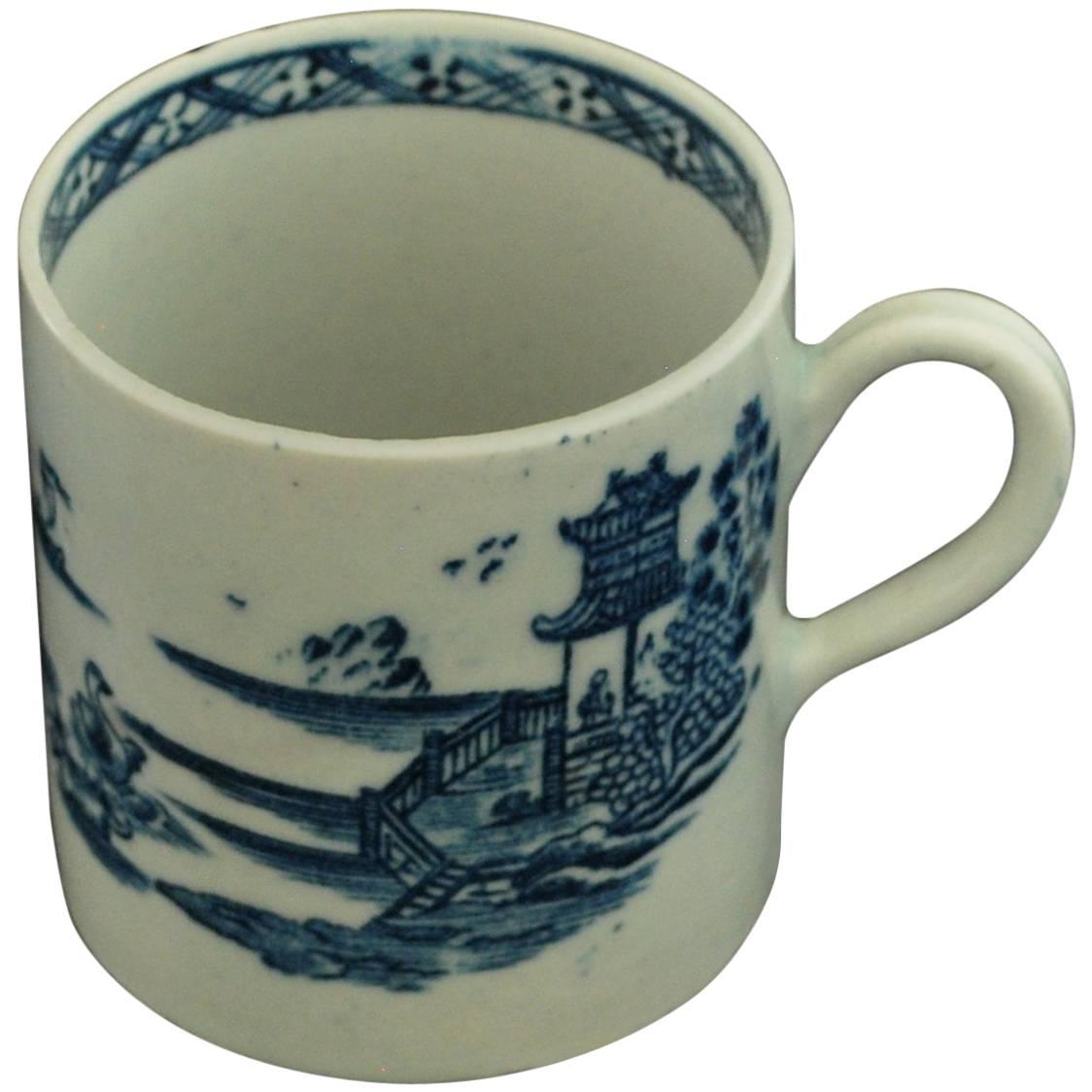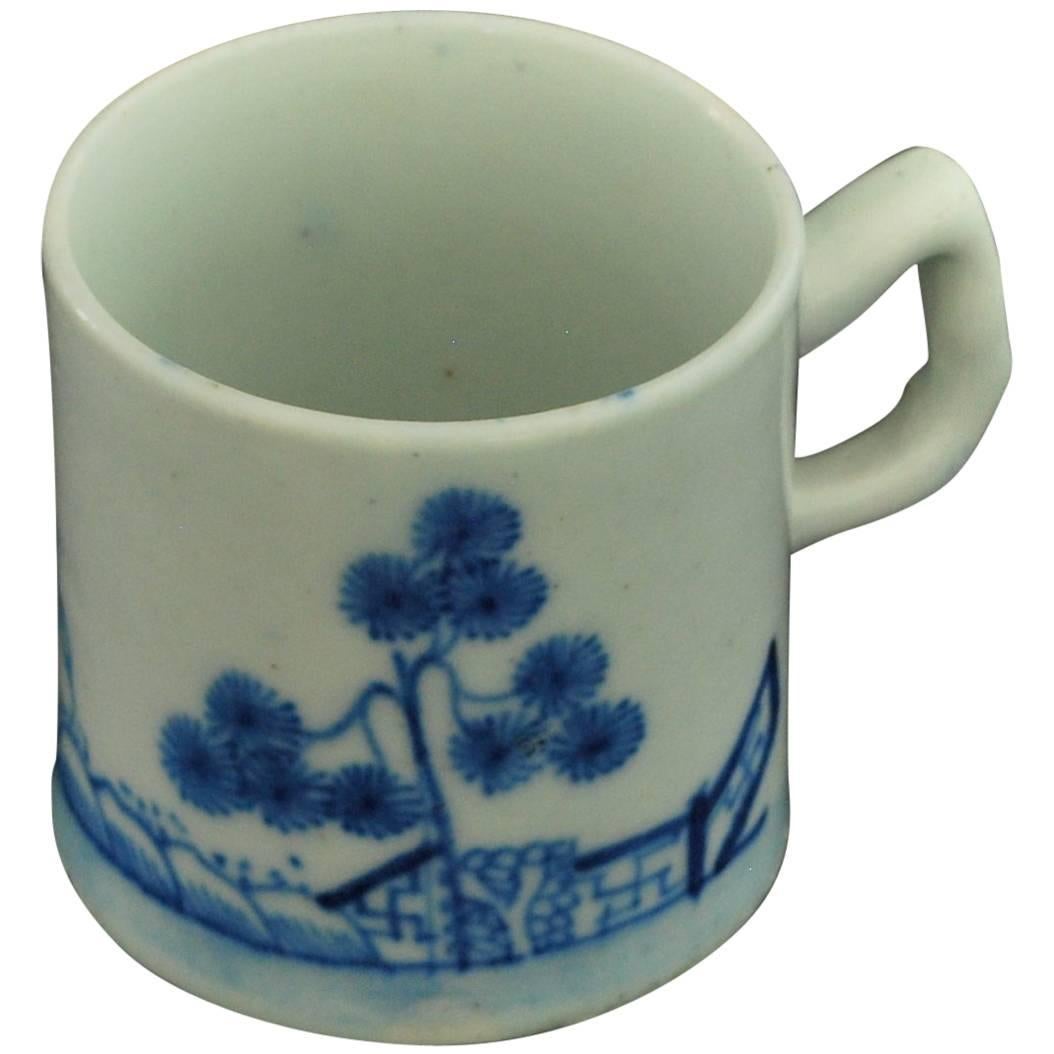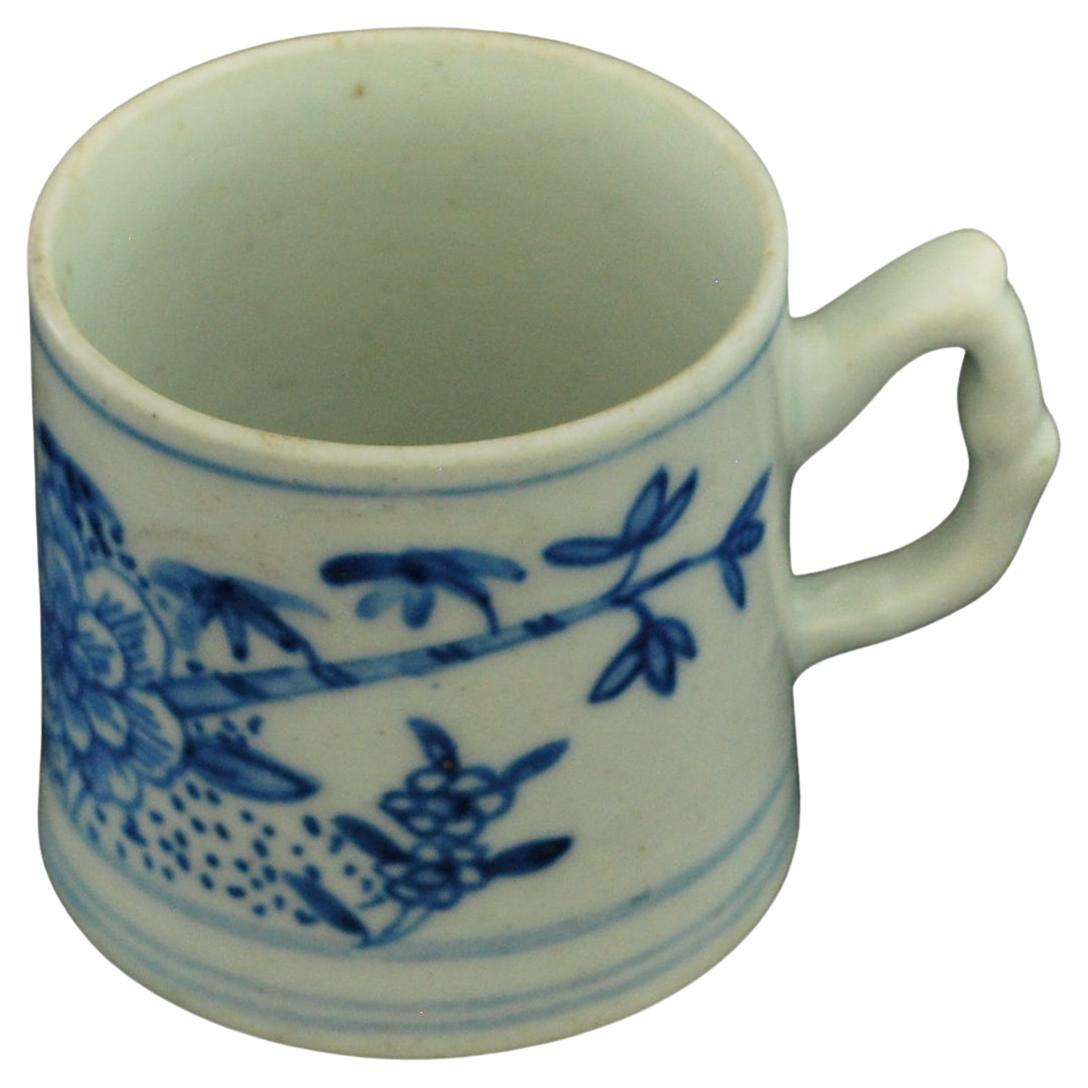Items Similar to Coffee Can, Blue and White "Desirable Residence", Bow Porcelain, circa 1758
Want more images or videos?
Request additional images or videos from the seller
1 of 7
Coffee Can, Blue and White "Desirable Residence", Bow Porcelain, circa 1758
About the Item
Painted in under-glaze blue with the Desirable Residence pattern, featuring telegraph poles, and unusual feature for this period.
Prov: Taylor Collection; Mercury Antiques Melbourne.
- Creator:Bow Porcelain (Maker)
- Dimensions:Height: 2.2 in (5.59 cm)Diameter: 7 in (17.78 cm)
- Style:Chinoiserie (Of the Period)
- Materials and Techniques:
- Place of Origin:
- Period:
- Date of Manufacture:circa 1758
- Condition:
- Seller Location:Melbourne, AU
- Reference Number:
About the Seller
5.0
Vetted Seller
These experienced sellers undergo a comprehensive evaluation by our team of in-house experts.
Established in 2005
1stDibs seller since 2017
68 sales on 1stDibs
Typical response time: 5 hours
- ShippingRetrieving quote...Ships From: Melbourne, Australia
- Return PolicyA return for this item may be initiated within 14 days of delivery.
More From This SellerView All
- Coffee Can, Blue and White "Residence", Bow Porcelain, circa 1755By Bow PorcelainLocated in Melbourne, VictoriaAn early coffee can, painted in under-glaze blue with a large residence in a Chinese landscape. Prov: Taylor Collection; Watney Collection.Category
Antique Mid-18th Century English Chinoiserie Porcelain
MaterialsPorcelain
- Coffee Can, Blue and White "Scholar's Rock" Bow Porcelain, circa 1751By Bow PorcelainLocated in Melbourne, VictoriaAn early coffee can, painted under the glaze with a Scholar’s Rock and associated items. Prov. Taylor Collection; Stockspring Antiques.Category
Antique Mid-18th Century English Chinoiserie Porcelain
MaterialsPorcelain
- Coffee Can, Blue and White "Ribbon Landscape", Bow Porcelain, circa 1753By Bow PorcelainLocated in Melbourne, VictoriaAn early coffee can, painted in under-glaze blue with a Chinese landscape. Prov: Taylor Collection; Roderick Jellicoe.Category
Antique Mid-18th Century English Chinoiserie Porcelain
MaterialsPorcelain
- Coffee Can, Blue and White "Swans & Pagoda", Bow Porcelain, circa 1765By Bow PorcelainLocated in Melbourne, VictoriaDecorated with an under-glaze blue print of a Chinese landscape, featuring a man at the window of a pagoda, admiring swans on the lake. Bow didn't produce very much in the way of ...Category
Antique Mid-18th Century English Chinoiserie Porcelain
MaterialsPorcelain
- Coffee Can, Blue and White "Banana Trees", Bow Porcelain, circa 1753By Bow PorcelainLocated in Melbourne, VictoriaAn early coffee can, painted in under-glaze blue with banana trees in a landscape. Prov: Taylor Collection; Parkside Antiques.Category
Antique Mid-18th Century English Chinoiserie Porcelain
MaterialsPorcelain
- Coffee Can Blue and White "Peony & Bamboo" Bow Porcelain, circa 1754By Bow PorcelainLocated in Melbourne, VictoriaAn early coffee can, painted in under-glaze blue with peonies and bamboo. The painting links with the William Pether 1754 jug. The decoration is taken directly from Chinese examples, and was intended to compete with Chinese imports. Peonies and bamboo are both commonly depicted in Chinese porcelain decoration. Peonies, also known as the "king of flowers," are often depicted in Chinese art as a symbol of wealth, nobility, and good fortune. Bamboo, on the other hand, is a symbol of integrity, resilience, and longevity. Together, peonies and bamboo are often used to symbolize the harmonious balance between wealth and integrity. Chinese porcelain with peony...Category
Antique Mid-18th Century English Chinoiserie Porcelain
MaterialsPorcelain
You May Also Like
- Bow Pair of Porcelain Figures, Arlecchino and Columbina, Rococo ca 1758By Bow PorcelainLocated in London, GBThis is a wonderful pair of figures of Arlecchino and Columbina, made by the Bow Porcelain factory in about 1758. These figures formed part of a series of the Commedia dell'Arte, a very popular series of theatrical figures that served as decoration at the dinner table in the 18th Century. The Bow Porcelain Factory was one of the first potteries in Britain to make soft paste porcelain, and most probably the very first to use bone ash, which later got perfected by Josiah Spode to what is now the universally used "bone china". Bow was the main competitor of the Chelsea Porcelain Factory, but where Chelsea made very fine slipcast porcelain, Bow made a different soft paste porcelain that tended to be softer and could be pressed into moulds. Bow served a larger public generally at lower prices. The factory was only in operation between 1743 and 1774, after which the tradition got incorporated into some of the later famous potteries such as Worcester and Derby. These figures were used to adorn the dinner table when dessert was served; groups of figures served to express something about the host, the guests, or to direct the conversation. The Italian Commedia Dell'Arte, a comical form of masked theatre, was very popular in those days and Bow copied many figures of the German Meissen series that were brought out in the decades before. This pair dates from about 1758, which was at the height of Bow's ability to make beautiful figurines often copied from Chelsea or Meissen. The pair is modelled after a Meissen pair by Kaendler. The porcelain is translucent with a beautiful milky glaze - Bow was probably the first pottery using bone in its porcelain recipe. Arlecchino (Harlequin) is playing the bagpipes, dressed in an odd costume of mismatched chintz and playing cards and wearing a funny black trumpet...Category
Antique 1750s English Rococo Figurative Sculptures
MaterialsPorcelain
- Miles Mason Porcelain Coffee Can Blue & White Broseley Gilded Ptn 50, circa 1808By Miles Mason PorcelainLocated in Lincoln, LincolnshireThis is a porcelain blue and white, gilded Coffee Can made by Miles Mason (Mason's), Staffordshire Potteries, in the early 19th century George 111rd period, circa 1805-1810. The piece is well potted with vertical flutes, a slightly wavy rim and the loop handle with the distinctive thumb rest spur. The can is decorated in the under-glaze blue printed Pagoda or Broseley, chinoiserie Willow pattern, (sometimes called Boy at the Door pattern). The piece is also richly gilded in Miles Mason pattern 50 as illustrated on Page 78 of the book; Miles Mason Patterns and Shapes, produced by the Mason's Collectors' Club. The coffee can is also hand gilded around the rims and on the outer handle. The piece is fully marked to the base with an under-glaze blue printed square seal mark (pseudo Chinese) as illustrated on page 92 of the above publication. Overall a very good Georgian coffee can...Category
Antique Early 19th Century English Chinoiserie Ceramics
MaterialsPorcelain
- Bow Porcelain Orphaned Coffee Cup, Famille Rose Peony, circa 1755By Bow PorcelainLocated in London, GBThis is a very charming orphaned coffee cup made by the Bow Porcelain factory in about 1755. The cup is decorated in a Chinese "famille rose" peony pattern. This cup would have been part of a large tea service, and the tiny size shows how expensive coffee was in the 18th Century. The Bow Porcelain Factory was one of the first potteries in Britain to make soft paste porcelain, and most probably the very first to use bone ash, which later got perfected by Josiah Spode to what is now the universally used "bone china". Bow was the main competitor of the Chelsea Porcelain Factory, but where Chelsea made very fine slipcast porcelain, Bow made a different soft paste porcelain that tended to be softer and could be pressed into moulds. Bow served a larger public generally at lower prices. The factory was only in operation between 1743 and 1774, after which the tradition got incorporated into some of the later famous potteries such as Worcester and Derby. The cup is unmarked, which is normal for Bow items of this era. Condition report the cup is in excellent condition without any damage or repairs. There are various glazing imperfections, which are quite normal for porcelain of this era. Antique British porcelain...Category
Antique 1750s English Rococo Tea Sets
MaterialsPorcelain
- English Porcelain Blue and White Tart Pan, Worcester, 1758Located in New York, NYEnglish porcelain blue and white tart pan, Worcester, 1758.Category
Antique 1750s English Porcelain
MaterialsPorcelain
- Copeland 'Spode' Porcelain Coffee Can Finely Hand Painted & Gilded, circa 1860By CopelandLocated in Lincoln, LincolnshireThis is a very beautiful English coffee can, all hand painted and gilded, made by Copeland China and with a factory printed mark to the base, dating...Category
Antique Mid-19th Century English Chinoiserie Ceramics
MaterialsPorcelain
- Early Machin Porcelain Coffee Can in The Proposal Chinoiserie ptn, circa 1810By MachinLocated in Lincoln, LincolnshireThis is a porcelain coffee can or cup by Machin with a very good Chinoiserie pattern and dating to very early in the 19th century, late Georgian period. This coffee can has nominall...Category
Antique Early 19th Century English Chinoiserie Ceramics
MaterialsPorcelain
Recently Viewed
View AllMore Ways To Browse
Blue Bow
Melbourne Used Furniture
Used Furniture In Melbourne
Chinoiserie Porcelains Blue And White
Mercury Collection
Antique Porcelain Coffee Cans
Blue Mercury
Blue And White Coffee Can
Antique Chinoiserie Porcelain
Antique Melbourne
Blue Mercury Glass
Bow Porcelain White
18th Century Bow Porcelain
Antique Furniture In Melbourne
Bow Pattern Porcelain
Antique Glass Melbourne
Antique Silver Melbourne
Antique French China Plates





